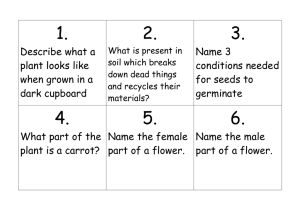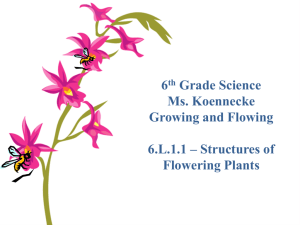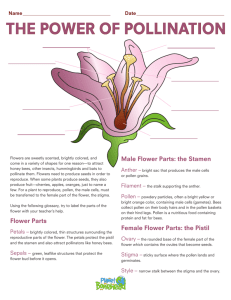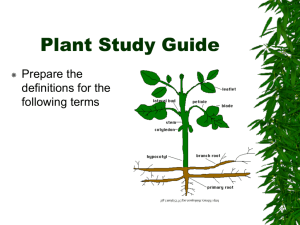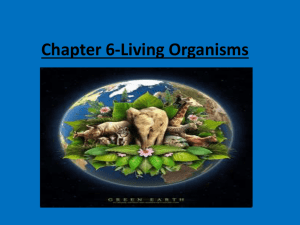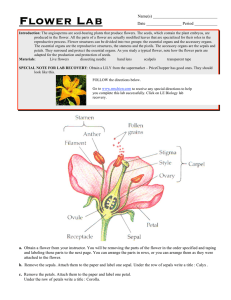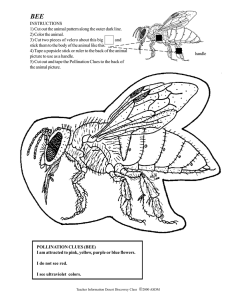Reproduction in Flowering Plants
advertisement
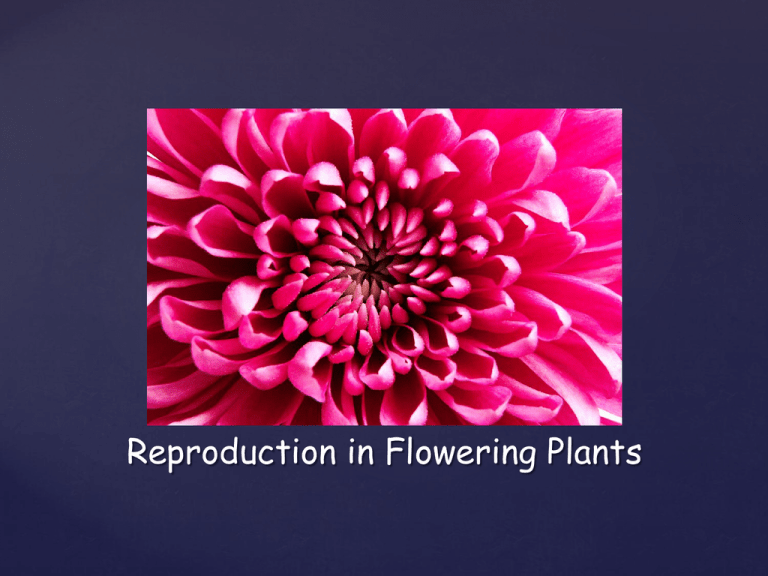
{
Reproduction in Flowering Plants
The Parts of a Flower
Most flowers have
four parts:
sepals
petals
stamens
Pistil
The parts of a flower
Sepals protect the
bud until it opens.
Leaves that cover
the plant
Petals attract
insects.
Stamens make pollen.
Pistil grow into fruits
which contain the
seeds.
Stamen (male)
Anther: pollen
grains grow in the
anther.
Filament: Holds up
the anther
When the grains
are fully grown, the
anther splits open.
Pistil (female)
Stigma
Style
Carpel (ovary)
Ovules (eggs)
1 in each plant. Located
in the center
Label the Pictures
Pollination
Flowering plants use
the wind, insects,
bats, birds and
mammals to
transfer pollen.
Pollen moves from
the stamen part of
the flower to the
stigma part of the
flower.
Pollination
A flower is
pollinated when a
pollen grain lands on
its stigma.
Each carpel grows
into a fruit which
contains the seeds.
Seed dispersal
Seeds are dispersed in
many different ways:
Wind
Explosion(Eject)
Water
Animals(birds, dogs…)
Wind pollination
Some flowers, such as
grasses, do not have
brightly coloured
petals and nectar to
attract insects.
They do have stamens
and carpels.
These flowers are
pollinated by the wind.
How animals help seed
dispersal
Some seeds are
hidden in the
ground as a winter
store.
Some fruits have
hooks on them and
cling to fur or
clothes.
How birds help seed
dispersal
Birds and animals
eat the fruits and
excrete the seeds
away from the
parent plant.
